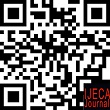The Effectiveness Smart Chart to Improve the Students Understanding in Linguistic
Abstract
Difficult in understanding the saintific book, the monoutone learning method and uninteresting way to learn the Linguistic was the the classic problem which never resolved up to now. The purposes of this research are to cover the students’ problems in understanding Morphemes and Syntax Material based in virtual learning, reduce the students’ pressure and Increase the students’ motivation to learn Morphemes and Syntax material using Smart Chart. In implication, this reseach using experimental research with one group pre-test and post-test. The research was done for the English Department Students by using population and sampe is 32 students whose taken Morpheme and Syntax subject. This research designed was suitable which education atmoshere atmosphere in this era. The technique of sampling is using purposive sampling as the collecting data. Even the lecturer must be working hard and need more time to prepare the learning process, the students show the value table is 1,696 and value of t-test is 20,42. It means that Smart Chart Technique is effective and the students got good achievement.
Keywords
Full Text:
DOWNLOAD [PDF]References
Crossley, S. (2020). Linguistic features in writing quality and development: An overview. Journal of Writing Research, 11(3), 415–443. https://doi.org/10.17239/JOWR-2020.11.03.01
Cruz, R. F., & Tantia, J. F. (2017). Reading and Understanding Qualitative Research. American Journal of Dance Therapy, 39(1), 79–92. https://doi.org/10.1007/s10465-016-9219-z
Hrastinski, S. (2019). What Do We Mean by Blended Learning? TechTrends, 63(5). https://doi.org/10.1007/s11528-019-00375-5
Matchin, W., & Hickok, G. (2020). The Cortical Organization of Syntax. Cerebral Cortex, 30(3). https://doi.org/10.1093/cercor/bhz180
Mondada, L. (2016). Challenges of multimodality: Language and the body in social interaction. Journal of Sociolinguistics, 20(3), 336–366. https://doi.org/10.1111/josl.1_12177
Muhid, A., Amalia, E. R., Hilaliyah, H., Budiana, N., & Wajdi, M. B. N. (2020). The effect of metacognitive strategies implementation on students’ reading comprehension achievement. International Journal of Instruction, 13(2). https://doi.org/10.29333/iji.2020.13257a
Pino, L. K., Just, S. C., MacCoss, M. J., & Searle, B. C. (2020). Acquiring and Analyzing Data Independent Acquisition Proteomics Experiments without Spectrum Libraries. Molecular and Cellular Proteomics, 19(7). https://doi.org/10.1074/mcp.P119.001913
Rosiana, C. (2020). Productive Reading Activity Dalam Mempelajarai Sosiologi Dan Linguistik. Historis : Jurnal Kajian, Penelitian dan Pengembangan Pendidikan Sejarah, 5(2), 129–135. https://doi.org/10.31764/historis.vXiY.3423
Rosiana, C. (2021). Pengembangan Materi Morpho-Sytax Melalui Smart Chart. Jurnal Kiprah, 9(1), 56–65. https://doi.org/10.31629/kiprah.v9i1.3310
Roy, D. K. (2002). Learning visually grounded words and syntax for a scene description task. Computer Speech and Language, 16(3–4), 353–385. https://doi.org/10.1016/S0885-2308(02)00024-4
Sukman, S., Mistar, J., & Fikri, D. (2020). The Differences in Reading Skills between Auditory Learners and Visual Learners | SUKMAN | Jurnal Penelitian, Pendidikan, dan Pembelajaran. http://www.riset.unisma.ac.id/index.php/jp3/article/view/8262
Sulistyo, G. H. (2015). English as a Measurement Standard in the National Examination: Some Grassroots’ Voice. TEFLIN Journal - A publication on the teaching and learning of English, 20(1), 1. https://doi.org/10.15639/teflinjournal.v20i1/1-24
Tariq, T. R., Rana, M. A., Sultan, B., Asif, M., Rafique, N., & Aleem, S. (2020). An Analysis of Derivational and Inflectional Morphemes. International Journal of Linguistics, 12(1), 83. https://doi.org/10.5296/ijl.v12i1.16084
Truitt, A. A., & Ku, H. Y. (2018). A case study of third grade students’ perceptions of the station rotation blended learning model in the United States. Educational Media International, 55(2). https://doi.org/10.1080/09523987.2018.1484042
DOI: https://doi.org/10.31764/ijeca.v5i2.8175
Refbacks
- There are currently no refbacks.
Copyright (c) 2022 Caltira Rosiana, Triana Wuri Cahyanti

This work is licensed under a Creative Commons Attribution-ShareAlike 4.0 International License.
IJECA (International Journal of Education and Curriculum Application) already indexed:










___________________________________________________________________
| |
____________________________________________________________________
IJECA Publisher Office:







.jpg)




